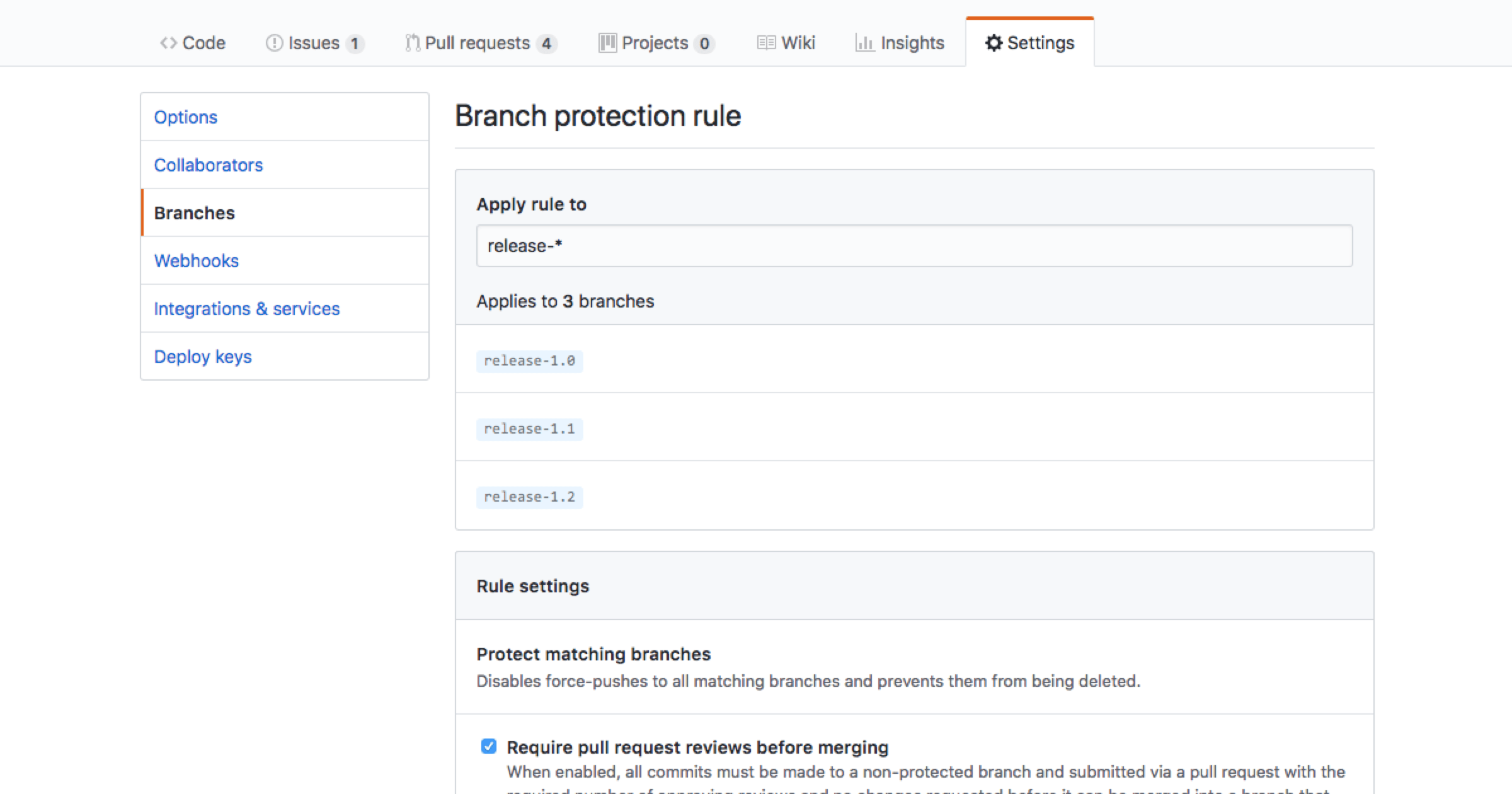Updates to protected branches
Automatically enforce protected branch settings across multiple branches in your repository.

Protected branches make sure the right reviews happen, support passing CI, and prevent force pushes. With our latest update, you can automatically enforce protected branch settings across multiple branches in your repository.
If you’re a repository owner or have admin permissions in a repository, you can now customize branch protections and enforce certain workflows, such as requiring more than one pull request review or requiring certain status checks to pass before allowing a pull request to merge.

Branch protection rules
Branch protection rules build on our existing branch protection functionality. Instead of setting up individual protections for multiple branches, you can share the same set of protections across different branches matching the same naming pattern.
Branch protection rule patterns are based on fnmatch syntax. You could use releases/v?.? to automatically protect branches like releases/v1.0, releases/v2.0, and releases/v2.1. And [1-9]-[0-9]-stable could automatically protect branches like 1-0-stable, 2-0-stable, and 2-1-stable.
View more fnmatch documentation or learn more about configuring protected branches.
Written by
Related posts

The future of AI-powered software optimization (and how it can help your team)
We envision the future of AI-enabled tooling to look like near-effortless engineering for sustainability. We call it Continuous Efficiency.

Let’s talk about GitHub Actions
A look at how we rebuilt GitHub Actions’ core architecture and shipped long-requested upgrades to improve performance, workflow flexibility, reliability, and everyday developer experience.

GitHub Availability Report: November 2025
In November, we experienced three incidents that resulted in degraded performance across GitHub services.